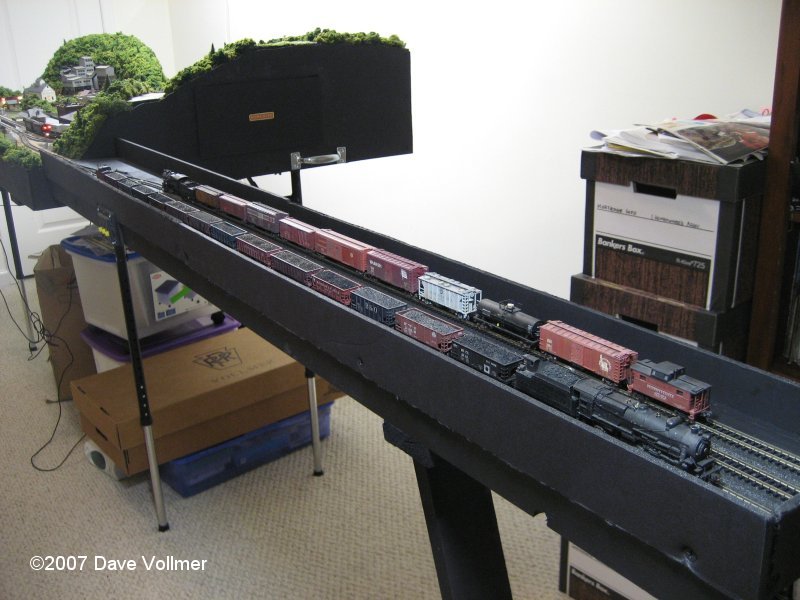GEXR
New Member
First of all, thanks for all the advice regarding my first attempt that, in retrospect, missed the mark completely. I feel that I have learned much since then.
This layout features a large yard and yard lead that are completely off the mainline. I exchanged the roundhouse for a 2-stall engine house. I figured all I needed would be a road locomotive and a switcher, so two stalls seemed sufficient.
I included the potential for passenger service with a rural station and siding to the north and a station to serve the town at south. Having two sidings, the one to the north could be used to park the passenger train when needed.
I included somewhat of a reversing loop that doubles as a branch line for servicing the industries. It doesn't really serve as a good reversing loop though because all curved sections are 18" except those of the branch line and the size of locomotive that can use it will be limited.
The breaks in the road indicate where the paved region of the town turns to gravel in the rural areas. The farmland is situated beside the stock lot and flour mill to facilitate the easy shipment of local commodities for refinement. I hope to pair the lumberyard with a small milling operation to make it more self-sufficient. I would model a dirt road crossing the tracks to the north west corner leading into a forest, hopefully giving the illusion of a large woodlot beyond the layout to the northwest.
I picture the north side of the layout against the wall. Hopefully that will allow enough access to the siding to the north.
I hope to model the layout in and around the year 1950. At 21, it pains me to think that I missed the wonders of dieselization and I would, therefore, love to reproduce it myself. I would run a small steamer as a switcher, a GP9 as the road loco and an F unit (A and B?) as the passenger engine. I might also switch up the passenger train with a streamlined steamer... who knows?!
Any criticism/advice would be much appreciated! Thanks in advance.
-James
This layout features a large yard and yard lead that are completely off the mainline. I exchanged the roundhouse for a 2-stall engine house. I figured all I needed would be a road locomotive and a switcher, so two stalls seemed sufficient.
I included the potential for passenger service with a rural station and siding to the north and a station to serve the town at south. Having two sidings, the one to the north could be used to park the passenger train when needed.
I included somewhat of a reversing loop that doubles as a branch line for servicing the industries. It doesn't really serve as a good reversing loop though because all curved sections are 18" except those of the branch line and the size of locomotive that can use it will be limited.
The breaks in the road indicate where the paved region of the town turns to gravel in the rural areas. The farmland is situated beside the stock lot and flour mill to facilitate the easy shipment of local commodities for refinement. I hope to pair the lumberyard with a small milling operation to make it more self-sufficient. I would model a dirt road crossing the tracks to the north west corner leading into a forest, hopefully giving the illusion of a large woodlot beyond the layout to the northwest.
I picture the north side of the layout against the wall. Hopefully that will allow enough access to the siding to the north.
I hope to model the layout in and around the year 1950. At 21, it pains me to think that I missed the wonders of dieselization and I would, therefore, love to reproduce it myself. I would run a small steamer as a switcher, a GP9 as the road loco and an F unit (A and B?) as the passenger engine. I might also switch up the passenger train with a streamlined steamer... who knows?!
Any criticism/advice would be much appreciated! Thanks in advance.
-James
Last edited by a moderator:


